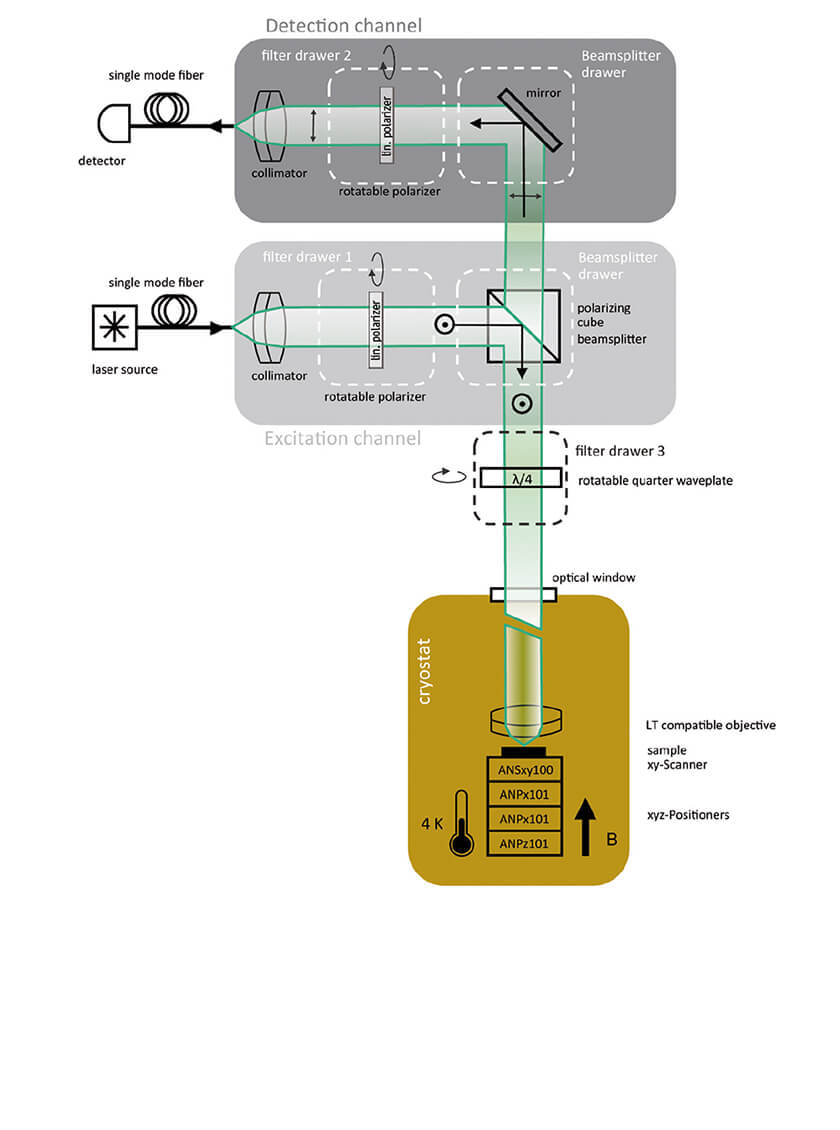Resonant Fluorescence
polarization extinction upgrade
Using a technique called polarization extinction, one gains access to resonance fluorescence, which is of utmost importance in the study of semiconductor quantum dots, color centers in diamond, and novel materials of great interest such as silicon carbide and single molecules. The excitation laser is polarized such that it is reflected by a polarizing beam splitter (s) towards the sample.
The back reflected light of the laser is then blocked by the same polarizing beam splitter and further suppressed, to obtain an extinction ratio of up to 107 with the attoCFM I. The fluorescence occuring at the same optical (i.e. resonant) wavelength, but different polarization (p) can be detected. For the purpose of alignment and calibration a rotatable quarter waveplate is mounted in the combined optical path down to the cold sample.

Configuration
| Excitation channel | rotatable polarizer* |
|---|---|
| beamsplitter | polarizing beamsplitter cube |
| Detection channel | rotatable polarizer* |
| extinction ratio | up to 107 depending on the laser (not included) |
| Combined beam | rotatable quarter waveplate* |
| wavelength range(s) | 480-550 nm, 500-600 nm, 565-770 nm, 700-1000 nm |
*closed loop rotation incl. electronics & software control

